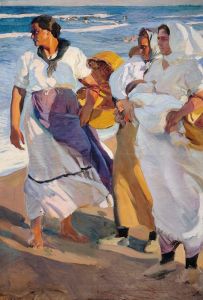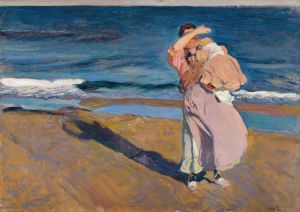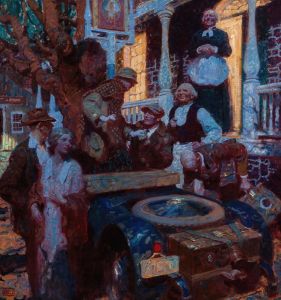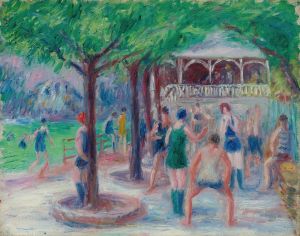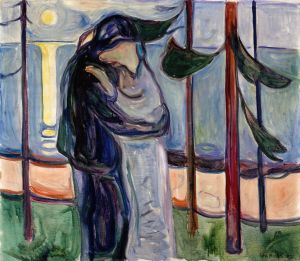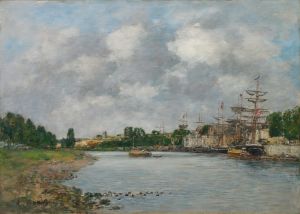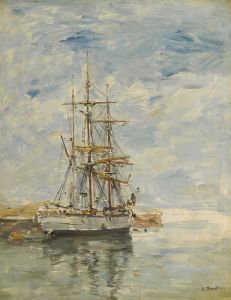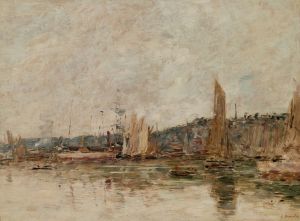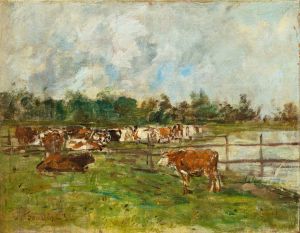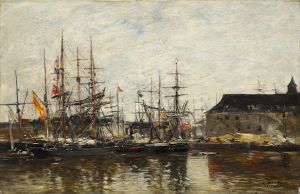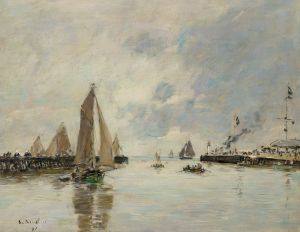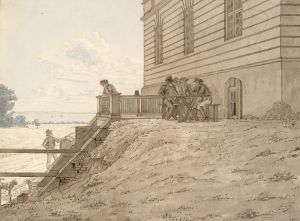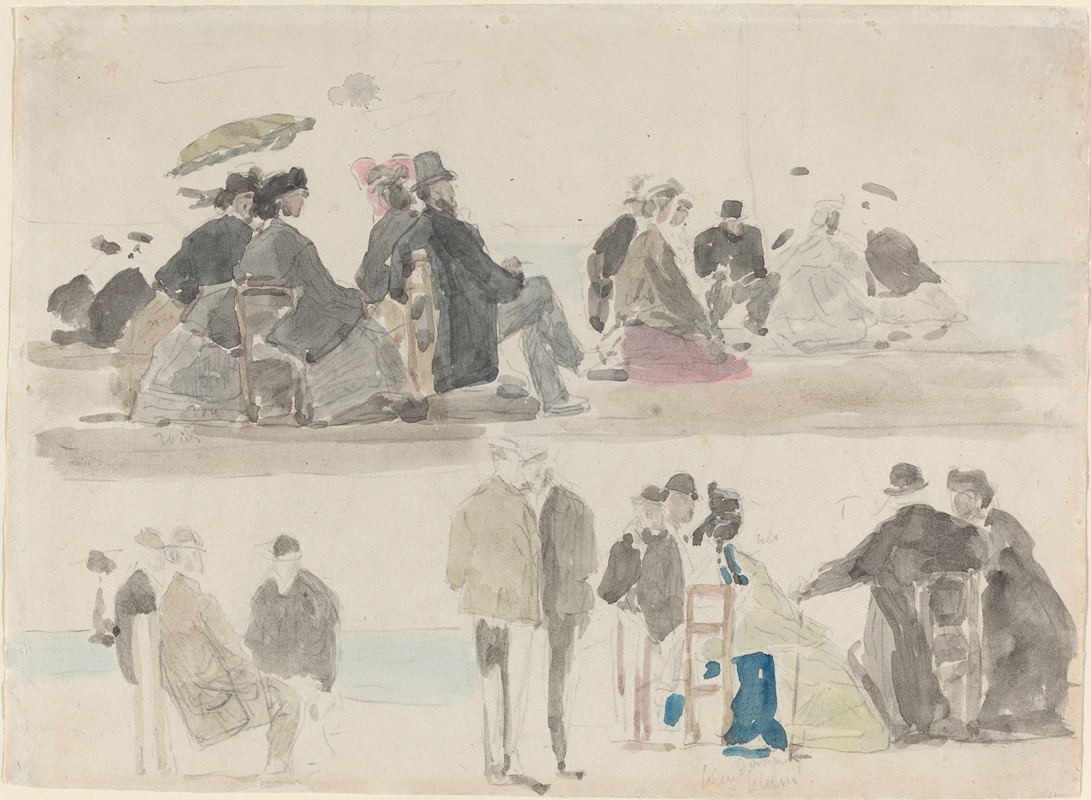
Ladies and Gentlemen on the Beach, in Two Registers
A hand-painted replica of Eugène Boudin’s masterpiece Ladies and Gentlemen on the Beach, in Two Registers, meticulously crafted by professional artists to capture the true essence of the original. Each piece is created with museum-quality canvas and rare mineral pigments, carefully painted by experienced artists with delicate brushstrokes and rich, layered colors to perfectly recreate the texture of the original artwork. Unlike machine-printed reproductions, this hand-painted version brings the painting to life, infused with the artist’s emotions and skill in every stroke. Whether for personal collection or home decoration, it instantly elevates the artistic atmosphere of any space.
"Ladies and Gentlemen on the Beach, in Two Registers" is a painting by the French artist Eugène Boudin, who is renowned for his beach scenes and is considered one of the precursors of Impressionism. Boudin was born on July 12, 1824, in Honfleur, France, and he passed away on August 8, 1898, in Deauville, France. His works are celebrated for their depiction of light and atmosphere, often capturing the leisurely activities of the bourgeoisie by the seaside.
This particular painting, "Ladies and Gentlemen on the Beach, in Two Registers," is an oil on canvas that exemplifies Boudin's fascination with the coastal life and his skill in rendering the nuances of light and weather. The painting is divided into two horizontal sections, or registers, which is a distinctive compositional technique that Boudin employed in several of his works. This division allows for a more detailed and layered depiction of the scene.
The upper register of the painting typically features the sky and sea, capturing the expansive and often turbulent nature of the coastal environment. Boudin's skies are known for their dramatic cloud formations and subtle gradations of color, reflecting his keen observation of the natural world. The lower register, on the other hand, focuses on the beach itself, populated by elegantly dressed men and women. These figures are often depicted engaging in various leisurely activities such as strolling, conversing, or simply enjoying the seaside view.
Boudin's attention to detail in the attire and postures of the beachgoers provides a vivid snapshot of the social customs and fashion of the time. The figures are usually rendered with a loose, yet precise brushwork that conveys movement and the casual elegance of the scene. The juxtaposition of the two registers creates a dynamic composition that draws the viewer's eye across the canvas, from the grounded activities of the beachgoers to the expansive and often moody sky above.
The painting is a testament to Boudin's ability to capture the transient effects of light and atmosphere, a skill that would later influence the Impressionist movement. His work was highly regarded by his contemporaries, including Claude Monet, who considered Boudin a mentor and was inspired by his approach to plein air painting.
"Ladies and Gentlemen on the Beach, in Two Registers" is housed in various collections, with some versions or similar works held in prestigious institutions such as the Musée d'Orsay in Paris and the National Gallery of Art in Washington, D.C. These institutions recognize Boudin's significant contribution to the development of modern landscape painting and his role in paving the way for the Impressionists.
In summary, Eugène Boudin's "Ladies and Gentlemen on the Beach, in Two Registers" is a masterful depiction of 19th-century coastal leisure, characterized by its innovative composition and sensitive portrayal of light and atmosphere. The painting remains an important work in the history of art, reflecting both the social context of its time and the evolving techniques that would shape the future of painting.





